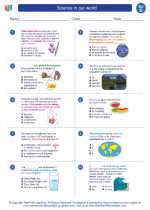Pituitary Gland
The pituitary gland is a small, pea-sized gland located at the base of the brain, and it is often referred to as the "master gland" because it produces hormones that regulate the functions of many other glands in the body. The pituitary gland is divided into two parts: the anterior pituitary (or adenohypophysis) and the posterior pituitary (or neurohypophysis).
Functions of the Pituitary Gland
The pituitary gland plays a crucial role in regulating various physiological processes in the body, including:
- Regulating growth and development
- Controlling the function of other endocrine glands, such as the thyroid, adrenal glands, and reproductive glands
- Regulating metabolism, energy balance, and water balance
- Controlling the production of breast milk
- Regulating the menstrual cycle and ovulation in females
Hormones Produced by the Pituitary Gland
The pituitary gland produces several important hormones, each of which has specific functions in the body:
- Human Growth Hormone (HGH): Stimulates growth, cell reproduction, and cell regeneration
- Thyroid-Stimulating Hormone (TSH): Stimulates the thyroid gland to produce thyroid hormones
- Adrenocorticotropic Hormone (ACTH): Stimulates the adrenal glands to produce cortisol
- Prolactin: Stimulates milk production in the mammary glands
- Luteinizing Hormone (LH) and Follicle-Stimulating Hormone (FSH): Regulate the menstrual cycle and ovulation in females, and sperm production in males
- Antidiuretic Hormone (ADH) and Oxytocin: Produced in the hypothalamus and stored in the posterior pituitary, these hormones regulate water balance and uterine contractions during childbirth, respectively
Study Guide
Here are some key points to remember about the pituitary gland:
- Location: The pituitary gland is located at the base of the brain, just below the hypothalamus
- Divisions: The pituitary gland is divided into the anterior pituitary and the posterior pituitary
- Functions: The pituitary gland regulates growth, metabolism, reproduction, and other physiological processes
- Hormones: The pituitary gland produces hormones such as HGH, TSH, ACTH, prolactin, LH, FSH, ADH, and oxytocin
Understanding the role of the pituitary gland and its hormones is essential for comprehending the body's endocrine system and its impact on overall health and well-being.
.◂Science Worksheets and Study Guides Fourth Grade. Science in our world

 Worksheet/Answer key
Worksheet/Answer key
 Worksheet/Answer key
Worksheet/Answer key
 Worksheet/Answer key
Worksheet/Answer key
 Vocabulary/Answer key
Vocabulary/Answer key
